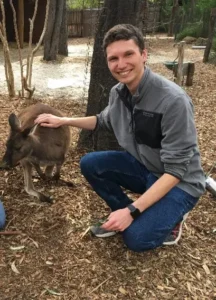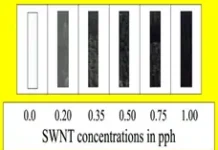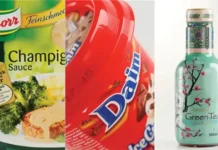YP Highlight #12: Samuel Leguizamon
 Dr. Samuel Leguizamon grew up in rural South Carolina and attended Clemson University for his bachelor’s in chemical engineering, where he was first introduced to polymer chemistry. He attended the University of Michigan as an NSF Graduate Research Fellow under the guidance of Professor Timothy Scott. Dr. Leguizamon had the opportunity to follow Prof. Scott to Melbourne, Australia, for his final year of his doctoral program to work as a visiting scholar at Monash University. His doctoral work primarily focused on the hybridization and duplex-formation of abiotic, sequence-defined oligomers utilizing dynamic covalent chemistries. However, it was at the University of Michigan that he first worked with photopolymerization research for dual-wavelength additive manufacturing (AM). This experience led him to a postdoctoral position at Sandia National Laboratories (SNL) in the Organic Materials Department in 2020 and later a staff scientist position at SNL in 2022. Dr. Leguizamon’s lab, the Leguizamon Polymer Agency (LPA), works at the intersection of chemistry, materials and engineering and often applies clever chemistries to novel processes to provide bespoke material geometries and properties. A highly collaborative and interdisciplinary lab, LPA works with other national laboratories, academic institutions and industrial partners to advance photochemistries, additive processes and process monitoring and qualification techniques. Areas of current interest include photo-controlled olefin metathesis, multi-wavelength and multi-material AM, depolymerization and polymer sustainability, and developing unique AM processes.
Dr. Samuel Leguizamon grew up in rural South Carolina and attended Clemson University for his bachelor’s in chemical engineering, where he was first introduced to polymer chemistry. He attended the University of Michigan as an NSF Graduate Research Fellow under the guidance of Professor Timothy Scott. Dr. Leguizamon had the opportunity to follow Prof. Scott to Melbourne, Australia, for his final year of his doctoral program to work as a visiting scholar at Monash University. His doctoral work primarily focused on the hybridization and duplex-formation of abiotic, sequence-defined oligomers utilizing dynamic covalent chemistries. However, it was at the University of Michigan that he first worked with photopolymerization research for dual-wavelength additive manufacturing (AM). This experience led him to a postdoctoral position at Sandia National Laboratories (SNL) in the Organic Materials Department in 2020 and later a staff scientist position at SNL in 2022. Dr. Leguizamon’s lab, the Leguizamon Polymer Agency (LPA), works at the intersection of chemistry, materials and engineering and often applies clever chemistries to novel processes to provide bespoke material geometries and properties. A highly collaborative and interdisciplinary lab, LPA works with other national laboratories, academic institutions and industrial partners to advance photochemistries, additive processes and process monitoring and qualification techniques. Areas of current interest include photo-controlled olefin metathesis, multi-wavelength and multi-material AM, depolymerization and polymer sustainability, and developing unique AM processes.
RTYP: When did you first learn about UV/EB as an industry and technology?
[The first exposure was] at the University of Michigan, where Tim Scott’s lab (the Scott Polymer Dojo) was employing radical thiol-ene polymerizations for a variety of applications. I was fortunate to be at the Dojo when Dr. Martin De Beer and Dr. Harry van der Laan were developing a dual-wavelength approach to continuous printing. I learned quite a bit from them, and my first hands-on photopolymerization experiences were unsuccessful attempts at dual-wavelength AM using alternative chemical mechanisms. But these experiences really influenced my work at SNL and understanding of UV/EB technologies.
RTYP: Have you run into any challenges as a young professional?
So many. The trick is to learn from them. Every failure has a teachable moment and often its these failures that stimulate new ideas and new paths forward. And we all fail, so talking about failures with others helps you overcome challenges together.
RTYP: How could we encourage more young professionals to get involved in UV/EB Technology?
Demos and engagement. UV/EB technology is pretty dang awesome and accessible. Hobby printers aren’t too expensive and are easy to use, so let’s get more demos into schools. I hope we start to see a push toward on-demand manufacturing using AM technology in schools as it becomes more widespread in industry.
RTYP: What are your suggestions for students or YPs who are just starting their professional careers?
Network and reach out to experts in the field. You’ll be amazed at how willing scientists at all levels are to chat with you about ideas and experiences. Networks grow exponentially, and you’ll always have someone to turn to for collaboration, assistance or guidance. Also, find an area that really motivates you and feeds your passion. If you love what you do, it doesn’t feel like work and ideas come naturally. You’ll end up finding other passionate folks to build meaningful and impactful collaborations while having a blast. Sure, you’ll have rough days, but more good than bad.
RTYP: Do you have anything else you want to share with us?
We’re at a very exciting time in UV/EB technology. There’s some amazing work that’s going on by young professionals and much of that work is in collaboration with others. I’m particularly excited to see the push toward sustainability and multi-wavelength or multi-stimuli materials. I really enjoy discussing ideas in these fields and ways to collaborate, so please feel free to reach out to me anytime!
The RadTech YP Committee aims to help young professionals (YPs) grow in the use and development of UV and EB technology. We are a group dedicated to enhancing interactions between YPs and senior experts within RadTech. YPs are students and professionals early in their careers who utilize UV amd EB technology in industry, government, or academia. If you have questions or comments or would like to get involved, please contact us via email (yp@radtech.org).





